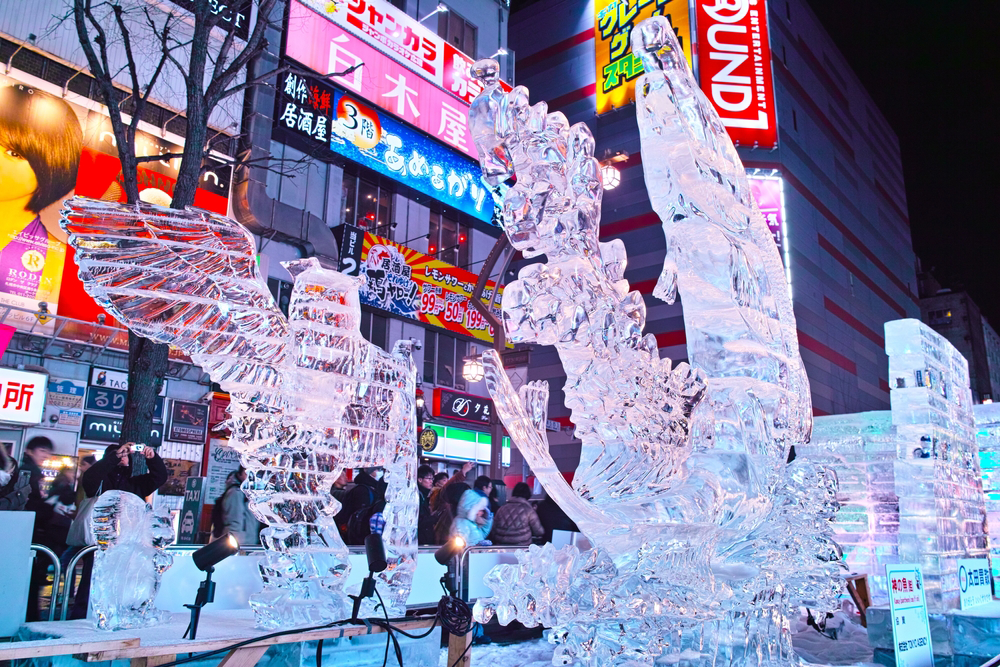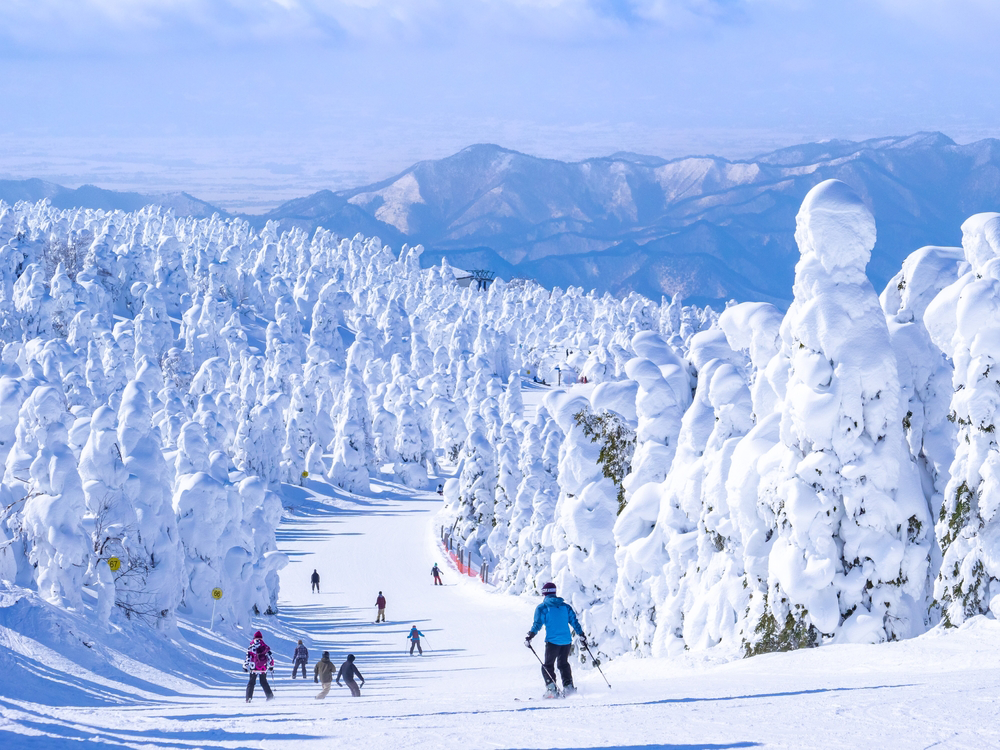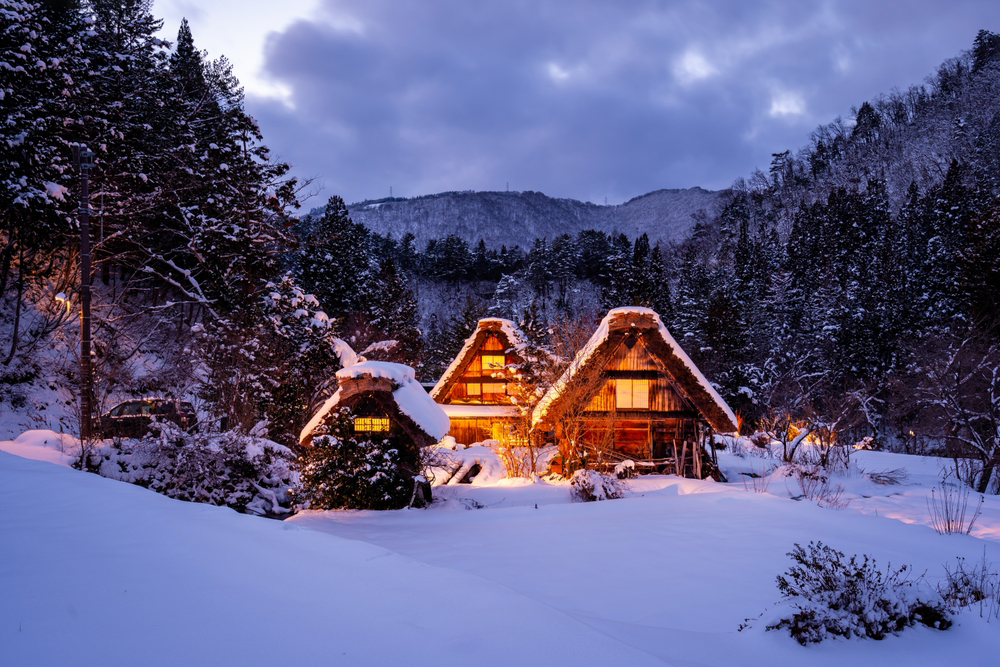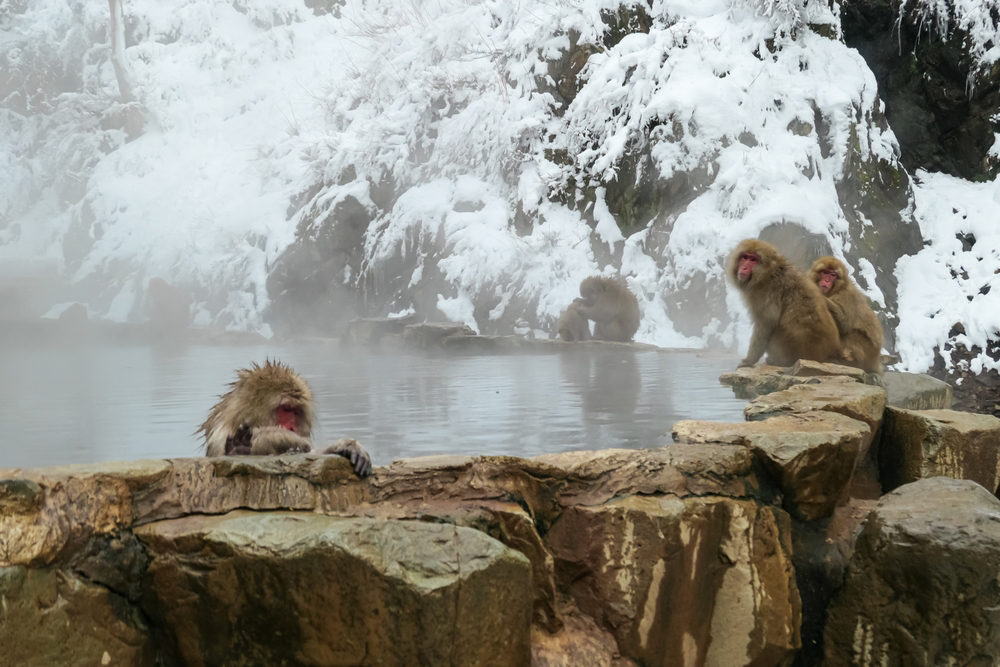
Japan Winter Travel Guide 2025–2026: Top Things to Do, Ski Resorts, and Sapporo Snow Festival
Indholdsfortegnelse
While many travelers picture Japan in spring or fall, the country’s winter season holds a powerful and undiscovered magic. Imagine seeing iconic temples dusted in snow without the crowds, witnessing colossal ice sculptures glow under festival lights, and soaking in a natural hot spring as snowflakes fall around you. In fact, Japan welcomed over 2.7 million visitors in January 2024, nearly 2.8 million in February, and a record 3.49 million in December. It is proof that winter is becoming one of the country’s most celebrated travel seasons and not a time to avoid.
This comprehensive guide will show you how to embrace it, so you can cover everything from world-class ski slopes to cozy culinary traditions for your unforgettable 2025–2026 Japan winter trip.
Key Takeaways:
👉 Strategically time your visit by choosing December for festive urban illuminations or January and February for peak “Japow” snow conditions and major snow festivals.
👉 Winter provides access to unique seasonal spectacles, from the natural “Snow Monsters” of Zao to the rare chance to see iconic cultural sites like Kyoto’s temples in serene, snow-dusted tranquillity with fewer crowds.
👉 Critical advance planning is required, as accommodations in high-demand areas like ski resorts and festival cities must be booked 4-6 months ahead to secure your ideal stay.
What to Know Before You Go
Choosing the right time for your winter visit and packing appropriately are key to a comfortable and memorable trip. Here’s a breakdown of the essentials.
Timing Your Trip: A Quick Comparison
Your experience can vary significantly depending on which month you choose to visit, offering two distinct winter atmospheres.
| Timeframe | What to Expect |
| December | A festive atmosphere with dazzling city illuminations. Less guaranteed heavy snow, but a great time for enjoying holiday lights and a vibrant city feel. |
| January/February | Prime time for a true winter wonderland. The deepest, most reliable snowfall for skiing, snow festivals, and picturesque landscapes. |
Your choice depends on whether you’re seeking the magic of festive city lights or the immersive beauty of a true powder-snow paradise.
What to Pack: The Art of Layering
Packing for a Japanese winter is all about smart layering, which allows you to stay comfortable both outdoors in the cold and indoors in well-heated buildings.
- Base Layer: Thermal shirts and leggings to wick away moisture.
- Mid-Layer: Fleece jackets or warm sweaters for insulation.
- Outer Shell: A waterproof and windproof jacket and pants to protect you from the elements.
- Essential Accessories: A warm hat, gloves, a scarf, and thick wool socks are non-negotiable.
- Footwear: Insulated, waterproof boots with excellent grip for potentially icy streets.
With these essentials packed, you’ll be perfectly equipped to explore comfortably, no matter how low the temperature drops.
Getting Around
Don’t let the snow disrupt your plans; Japan’s transportation system is famously efficient and operates with astonishing reliability year-round.
- Shinkansen (Bullet Train): Japan’s high-speed train network is a marvel of punctuality, remaining exceptionally reliable even in heavy snow.
- Japan Rail Pass: For itineraries involving multiple cities, this pass is an invaluable and cost-effective option for unlimited travel on JR lines.
You can confidently plan a multi-city itinerary, and your journey will be just as seamless as the destination is beautiful.
World-Class Snow & Ice Festivals

When you think of winter in Japan, Hokkaido is the epicenter of the magic. The island is world-renowned for its legendary powder snow, affectionately called “Japow” by skiers and snowboarders. This incredible snow is the star of its world-class festivals.
Must-See Winter Spectacles
Japan transforms its winter landscape into a breathtaking canvas where snow and ice become the medium for incredible artistry. From world-famous festivals drawing millions to surreal natural wonders, these are the spectacles that define the season.
- Sapporo Snow Festival (Early February): The season’s crown jewel. Odori Park becomes an open-air museum of colossal, intricately carved snow and ice sculptures. The atmosphere is electric with food stalls, live music, and mesmerizing light shows.
- Otaru Snow Light Path (Early February): For a more romantic and tranquil experience, the nearby charming canal town glows with thousands of candles and delicate snow statues.
- Zao’s “Snow Monsters” (Yamagata): A breathtaking natural phenomenon where trees on Mount Zao become so encrusted with ice and snow that they take on monstrous, otherworldly shapes.
These spectacles are more than just sights; they are the anchors of a truly legendary winter trip. From our experience, prioritizing a visit to the awe-inspiring Sapporo Snow Festival or the surreal Zao Snow Monsters will elevate your journey from a great vacation into a once-in-a-lifetime memory you’ll share for years to come.
Culture & Cities in a Different Light

While many flock to Japan’s cities in spring and autumn, the winter season offers a rare and privileged opportunity. It’s a chance to witness these iconic cultural heartlands shed their crowds and reveal a more intimate, serene, and arguably more magical character.
Winter offers a chance to see Japan’s cultural heartlands in a new, more peaceful light. A visit to Kyoto during this season means fewer crowds and moments of profound serenity.
Unforgettable Winter Sights
- Kyoto’s Serene Beauty: Seeing Kinkaku-ji (The Golden Pavilion) or the traditional streets of Gion covered in a delicate dusting of snow is a photographer’s dream. This is the perfect time to peacefully explore Kyoto and its many temples in Kyoto, from Nijo Castle to the grounds near the Kyoto Imperial Palace. The entire city of Kyoto feels more intimate.
- Shirakawa-go Village: This UNESCO World Heritage site, with its gassho-zukuri farmhouses, looks like it’s been plucked straight from a fairy tale when its steep thatched roofs are blanketed in snow.
- Tokyo’s Dazzling Illuminations: For a modern spectacle, areas like Roppongi Hills, Marunouchi, and Shibuya explode in a sea of millions of twinkling lights, creating a dazzling futuristic cityscape.
Don’t underestimate Japan’s cities in the winter. Visits during this season offer a completely different, and often more profound, experience. The tranquillity you find at otherwise bustling temples in Kyoto is a rare gift, providing a chance to connect with these incredible places on a more personal and unforgettable level.
Cozy Traditions & Steaming Onsen

Beyond the grand festivals and snowy peaks, the true soul of a Japanese winter is found in its intimate traditions of warmth and comfort. To fully embrace the season, you must indulge in two of its most cherished rituals: soaking in geothermal hot springs and savoring hearty, communal cuisine.
Top Onsen & Wildlife Experiences
- Famous Onsen Towns: Visit Hakone for stunning views of a snow-capped Mt. Fuji or Noboribetsu in Hokkaido for its dramatic “Hell Valley,” a geothermal crater with steaming vents.
- Jigokudani Snow Monkey Park (Nagano): A truly unique sight where you can watch wild Japanese macaques descend from the mountains to bathe in their own natural hot spring.
Must-Try Winter Foods
Winter is a time for comforting food. Be sure to try these classics:
- Nabe: A communal hot pot stew with meat, seafood, and vegetables.
- Oden: A savory, slow-simmered dish with ingredients like daikon radish, tofu, and fishcakes.
- Ramen: A rich bowl of noodle soup, which is the perfect antidote to the cold.
The onsen experience is non-negotiable for an authentic Japanese winter trip. It’s more than a bath; it’s a cultural immersion that rejuvenates the body and soul after a day of exploring.
Booking the Right Hotel in Kyoto and Sapporo, Japan
Winter is a peak season, so to secure the best hotels in Japan, it’s crucial to book 4-6 months in advance. Finding the right hotel in Japan (either Kyoto or Sapporo), requires this foresight, whether you desire a traditional Japanese experience or modern comfort.
Choosing Your Stay
- Traditional Ryokan: For an immersive cultural stay, book a ryokan. Enjoy tatami mat rooms, multi-course kaiseki dinners, and often, private onsen.
- Ski Resort Hotel: For those hitting the slopes, a ski-in/ski-out hotel offers unparalleled access and convenience.
- Modern City Hotel: For a packed itinerary, a hotel near Station is incredibly convenient.
Travelodge Kyoto: Your Hub in the Heart of the City

For a packed Kyoto itinerary, having a comfortable, well-located base is essential. Travelodge Kyoto Shijo Kawaramachi is designed precisely for this purpose.
- Prime Location: Located in downtown Kyoto, our hotel places you right in the heart of the city. You’ll be just a short walk from the iconic Gion district and Nishiki Market, providing an ideal base to explore Kyoto’s most famous sights on foot.
- Modern Comfort: Escape the winter chill in our modern, comfortable rooms. We provide the plush bedding, warm amenities, and welcoming hotel staff essential for recharging after a day of exploring the city.
- Unbeatable Convenience: Our location in the Kyoto Shijo area provides seamless access to public transport, connecting you effortlessly to Kyoto Station for day trips and travel beyond the city to maximize every moment of your time in Kyoto.
At Travelodge, we believe the best trip to Japan starts with a worry-free stay. Book a strategic, comfortable, and reliable hotel in Kyoto for your entire winter exploration. Book here.
A Winter Wonderland Ready to Explore
From the adrenaline of world-class ski slopes to the quiet contemplation of a snow-covered temple in ancient Kyoto, Japan’s winter is a season of dynamic contrasts. Spend less on your stay and more on what matters.
Book your smart, affordable Japan adventure with Travelodge for winter 2025-2026.
Frequently Asked Question
Is it a good idea to rent a car for a winter trip in Japan?
For most travelers, it is not recommended. Roads in snowy regions like Hokkaido and Tohoku can be icy and treacherous. Japan’s train and public transport systems are incredibly efficient and reliable, even in winter, making them the safest and most convenient way to travel between cities.
What should I know about traveling during the New Year's holiday?
New Year’s (Shōgatsu) is Japan’s most important holiday. Many businesses, shops, restaurants, and tourist attractions close from December 29th to January 3rd. While it’s a fascinating time to witness cultural traditions like hatsumōde (the first shrine visit of the year), be prepared for closures and book transportation and accommodation far in advance.
Are winter illuminations only found in Tokyo?
While Tokyo is famous for its grand illuminations, many other cities across Japan host their own beautiful light displays. Cities like Osaka, Kobe, and Sapporo have spectacular events, as do smaller towns and even theme parks.
Can I see cherry blossoms if I visit in late winter?
Cherry blossoms (sakura) typically bloom from late March to April. However, if you visit in late February, you might be lucky enough to catch the plum blossoms (ume). They are the first sign of spring, with beautiful pink and white flowers that are just as celebrated as their more famous cousins.
How widely spoken is English in Japanese ski resorts?
Major international ski resorts like Niseko, Hakuba, and Furano are very foreigner-friendly. You will find that English is widely spoken by hotel staff, ski instructors, and restaurant workers. Signage is often in both Japanese and English, making it very accessible for international tourists.
